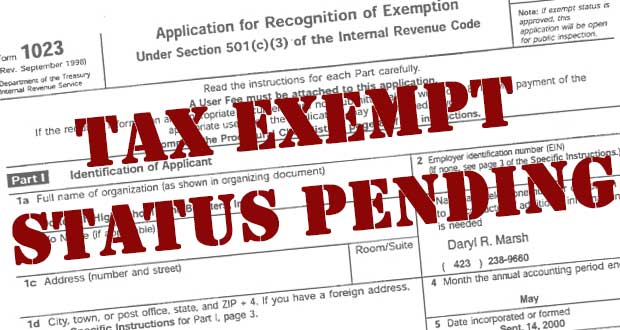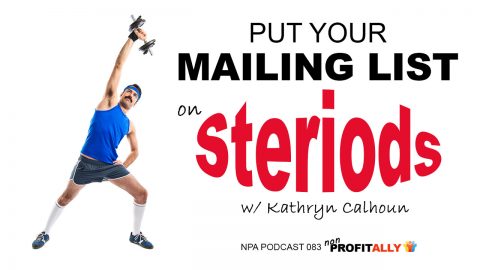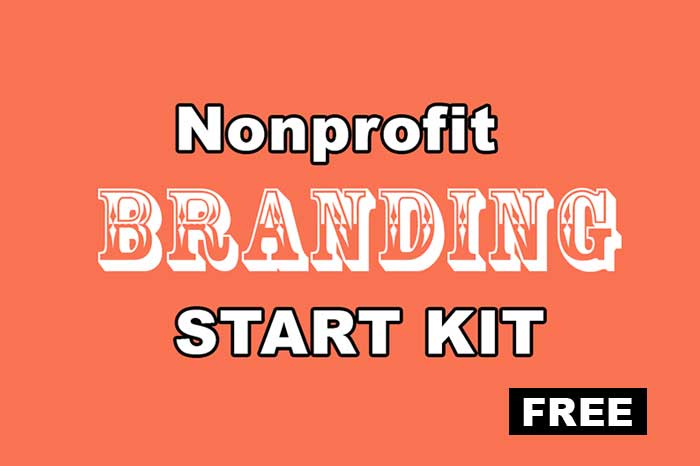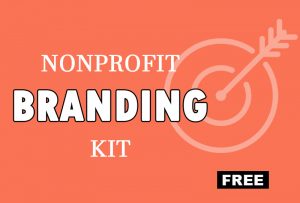Nonprofits seeking tax exemption under 501(c)(3) now have an easier method of filing, which has reduced the average time to receive an IRS Determination Letter to just a few weeks.
That new filing method is Form 1023-EZ, a shorter version of the original Form 1023, which is designed to streamline the application process for eligible nonprofits, and to reduce the IRS’s backlog of over 66,000 applications.
This post will cover the features of the new form, help you understand the form’s eligibility requirements, and lastly, touch upon how this affects your nonprofit.
First, let’s talk features. Here are three things you need to know about the form itself:
- It’s short. Unlike its 40-page cousin, the 1023-EZ is three pages. There is also a five-page “Eligibility Checklist,” which every nonprofit must complete before filing. Previously, the IRS estimated the 1023 filing should take an average of 100 hours. With the new form, that time is greatly reduced – down to just a few hours.
- You can file online. No more mailing a massive packet to the IRS. Pay, save your work, and submit everything through the IRS website.
- The IRS is processing this application at lightning speed. In July, IRS commissioner John Koskinen stated, the IRS would be “rubber-stamping” about 70% of all applications. So far, that’s held true. People have been receiving their determination letters in about two weeks.
You say my organization has to be eligible to file. What does that mean?
Not all nonprofit organizations can use Form 1023-EZ to apply for federal tax exemption. There are three main restrictions:
- Size. In order to be eligible, an organization must have under $50,000 in gross receipts, and under $250,000 in total assets. Larger organizations must use the original Form 1023.
- Organizational Structure. The entity must be organized as a nonprofit corporation. LLCs, L3Cs, and other entities are ineligible. The entity must be incorporated in one of the United States, the District of Columbia, or a territory, such as Puerto Rico.
- Activities. Certain types of organizations are ineligible, including schools, hospitals, churches, housing providers, and foundations. Review the Instructions to Form 1023-EZ and Eligibility Checklist to determine whether your organization must file Form 1023 instead. On the checklist, mark either “Yes” or “No” to each question, according to your organization’s activities. A single “Yes” means your organization is NOT eligible to file Form 1023-EZ, and you must use Form 1023.
By filing Form 1023-EZ, an organization declares that it complies with the IRS’s requirements. While this removes most of the initial scrutiny by the IRS, failure to disclose this information truthfully can still land your organization in hot water, and yourself in court as a perjurer.
So what does this all mean for your nonprofit?
As you already know, there are many steps to starting a nonprofit. In order to file for 501(c)(3) tax exemption, you must have consolidated your activities, incorporated, obtained an EIN, prepared bylaws and other internal documents, and come up with financial projections.
In other words, you must be prepared! All the steps leading up to filing the application are the same; only the time it takes to file Form 1023-EZ is reduced.
Arguably, there’s even more work to be done. With two forms to choose from, an organization must review its activities carefully, and select the more appropriate form to file.
Some organizations choose to file the full Form 1023, in order to disclose its activities to the IRS up front, rather than risk an audit in the future. Also of note: since releasing 1023-EZ, the IRS is processing the original form in an average of 3-4 months. For some, waiting a few months now, to avoid scrutiny later, is worth it.
Ultimately, make sure someone on your board, or an outside consultant, is able to help you sort through your options.
All in all, with the release of Form 1023-EZ, becoming a 501(c)(3) nonprofit just got a whole lot easier. If your organization falls into the 70% of eligible organizations, take full advantage of the IRS’s newest form of generosity, and get started today.















Comments are closed.
Hi Steve! I have form 1023 & publication 557; My question is, Can I use this website as a guide in filling out form 1023 for an upcoming NPO church and/or religious organization? I have Form 1023 and Publication 557. Do you have video on how to write a business plan for church and/or religious organization? I will forward you a website thanks
Hey Abigail, sorry for the delayed response. I suggest following this guide https://nonprofitally.com/start-a-nonprofit/. It will help you prepare for the 1023. I don’t have a business plan video.
Thanks Steve, just reviewing your response, looks like I’ll be filing form 1023EZ because my organization is starting small and the assets will be under fifty thousand. Will this website guide me thoroughly in filling out form 1023EZ instead of form 1023? Thanks
The site will help you walk through the process – from filing your articles to filling out the1023. Though there are not detailed instructions on the 1023ez, if you follow the guide it should be pretty straight forward.
Hi, I have all my paperwork but I just need the 501c3
How quicky I can get it?
The 1023EZ takes anywhere from 1-3 months to process. But even that can vary. Good luck.
How much do i need to start besides the application fee and can i used my existing EIN number from my business?
Sorry for the delayed response, I never got notified of the comment. So, if you do everything yourself then you just need to pay for application fees. This can include state incorporation, business licenses, etc. You need to have all your ducks in a row before you file (incorporation, board of directors, bylaws, etc). You will need a new EIN specifically for your nonprofit. Hope that helps.
Hey, thanks for this info.
My question is: what happens if we fill out the 1023 EZ based on financial projections that we do not exceed 50K in gross receipts and 250K in assets, but then exceed those projections? Is our 501c3 status revoked? Or does that only happen if we are audited?
Also, is the $50,000 in gross receipts per year for the first three years, or $50,000 total for the first three years?
Thanks for your help. This website has been a great asset in starting my program.
This is a great question. I will answer the second one first.
It is $50K per year.
As for the first question, that is still a bit of an unknown. I can say, with some certainty, that your 501c3 does not get revoked. But their may be additional paper work you have to do. For instance, your 990 tax form will be longer. If you earn under $50K then you only need to fill out a 990ez (it’s literally a postcard) during tax time. More than that and it becomes pretty involved.
I recommend submitting this to our “ask a lawyer” page. Linked above.
Steve, thanks for your comprehensive reply.
Dear Appalachian Expeditons; The $50K is the per-year amount. Generally, if you exceed that amount in a given year, you would file a different IRS return, such as the 990-EZ. But, financial projections are just one piece of it. The IRS has a number of other criteria that your organization needs to meet in order to qualify for the 1023-EZ. If you need further help setting up your nonprofit for success, feel free to contact Steve or myself and we can point you in the right direction. Thanks!
[…] Learn more about the 1023EZ at: https://nonprofitally.com/get-your-501c3-fast-tax-exempt-in-weeks […]
Hi Steve,
If I want to start a non-profit that is going to be exclusively funded by a specific for-profit entity then I know one of the benefits is that contributions made to the non-profit by the for-profit are tax-deductible for the for-profit.
But if the for-profit were to directly engage in the activities that the non-profit wants to pursue (general social welfare, i.e. giving away food, funding schooling, providing cooking tools, etc.) then the expenses incurred in conducting those activities would count as expenses for the for-profit anyway and tax-wise serve the same purpose as a “contribution” to the non-profit.
So in this case, what’s the benefit of forming a non-profit? A simplified example would be: for-profit earns $100k, gives away $100k of free food, net profit = $0, tax bill = $0. The same for-profit earns $100k, gives $100k to the non-profit and gets to deduct for tax purposes, taxable amount = $0, tax bill = $0.
Thanks in advance!
OK. I am no lawyer, so please don’t take this as legal advice. When a for profit donates to a nonprofit it is tax deductible, meaning they can take the $100,000 off of their taxable income, thus making their tax bill lower. If they just did the service themselves (for whatever reason) then the $100,000 would be an expense. But would not be deductible from their taxable income.
But there are concerns I have with the structure of an “exclusive” donor. What would be the purpose of having a nonprofit an limiting it to only one donor? For the sole purpose of the for profit to get a tax deduction? Not sure that passes a legal test. Also, why not just find an existing nonprofit that does the service and donate to them?
Though maybe you are just wondering about the pro/con in general. In which case, giving the money to a nonprofit has more benefits financially.
You can send me an email (from my contact page) if you want to give more details on the goals/purpose and maybe I can help better. Or try http://www.nonprofitlegalcenter.com/, they give free consultations. Tell them I sent you.
[…] Learn more about the 1023EZ at: https://nonprofitally.com/get-your-501c3-fast-tax-exempt-in-weeks […]
Great article. Thanks for the info, you made it easy to understand. BTW, if anyone needs to fill out a form 1023-EZ, I found a blank form in this site PDFfiller. This site also has some tutorials how to fill it out and a few related tax forms that you might find useful.
[…] Jame Gilmores (New Ally) article: “Get your 501c3 Fast – Tax Exempt Status Just Got EZ-ier” […]